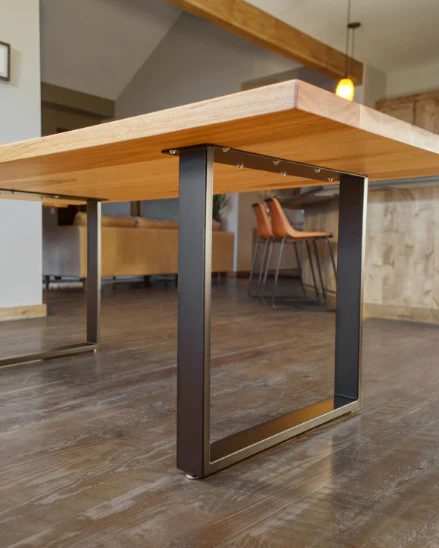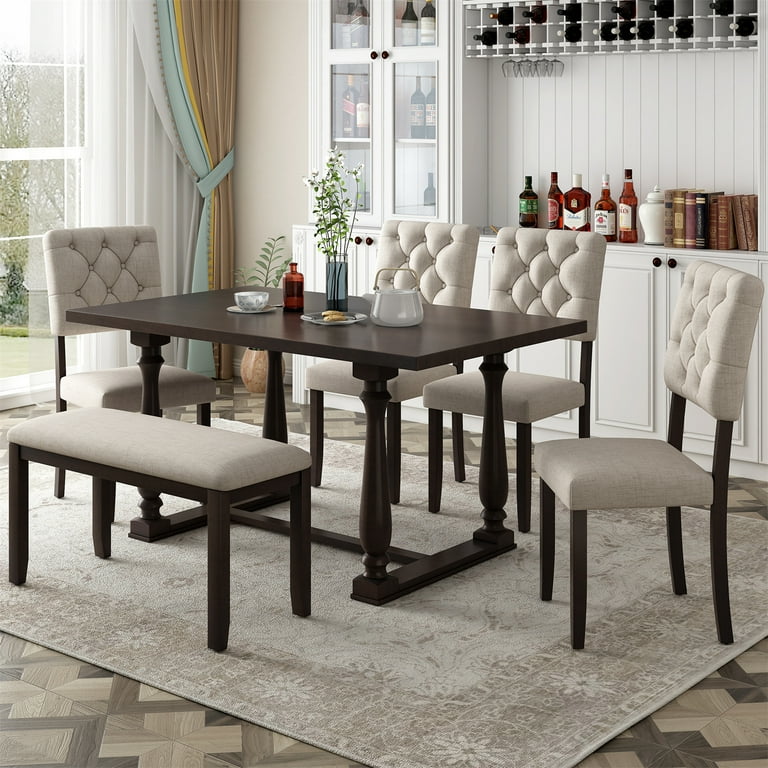Simple Steps to Replacing Old Dining Room Table Legs with New Ones
From Traditional to Modern: Find the Perfect Dining-room Table Legs for Your Design
While classic designs such as cabriole and transformed legs stimulate a sense of timeless class, modern designs like barrette and geometric choices present an opportunity for striking visual interest. As you think about these elements, the inquiry remains: just how can you flawlessly integrate these diverse leg styles to create an unified eating experience?
Recognizing Table Leg Styles
The range of eating space table leg designs can significantly affect both the looks and capability of the space. Each leg design contributes special visual aspects and useful functions, satisfying diverse style preferences and use needs. Understanding these designs is important for picking the right dining table that lines up with your general interior decoration vision.
For example, tapered legs supply a tidy, timeless look that can enhance a space's style, while pedestal bases offer stability and make the most of legroom, making them suitable for smaller sized areas. Barrette legs, a characteristic of mid-century modern-day style, present a commercial style, allowing for a ventilated, open feeling. Trestle legs evoke rustic appeal, offering robust assistance and a feeling of timelessness.
Additionally, the choice of materials plays a substantial role. Wooden legs can bring heat and structure, whereas steel choices commonly share a sleek, contemporary ambiance. Eventually, recognizing table leg designs is vital for developing a natural dining area that reflects personal style while ensuring practicality and comfort. By attentively considering these elements, you can enhance both the functional and visual allure of your dining space.
Standard Table Leg Options
When picking dining-room table legs, standard options usually embody classic style and workmanship. These layouts show a rich heritage and a commitment to top quality, making them ideal for those who value traditional aesthetics.
One of the most legendary traditional leg designs is the cabriole leg, defined by its elegant bent form. This style typically features ornamental carvings and is most generally found in Queen Anne and Chippendale furniture. Another preferred option is the transformed leg, which boasts a collection of smooth, rounded forms that provide a classic appearance while maintaining security.
In addition, the straight leg, while simple, offers a durable and unadorned structure that can mix effortlessly with a range of tabletop designs. For those drawn to ornate detailing, claw-and-ball feet legs stimulate a feeling of magnificence and can act as a sensational focal point in any kind of eating area.
Finally, stand bases, although not purely legs, offer an alternative traditional alternative that permits sufficient legroom and can be perfectly carved. Each of these conventional leg designs contributes to the total atmosphere of an eating area, marrying function with visual appeal.

Modern Table Leg Styles
Modern table leg designs offer a varied series of styles that stress tidy lines and innovative products. These layouts often prioritize capability while working as striking prime focus within an eating space. Minimal aesthetics are widespread, with legs crafted from products such as steel, glass, and engineered timber, which contribute to a contemporary and ventilated feel.
One prominent layout is the barrette leg, defined by its slender, tapered structure that supplies stability without overwhelming the table top (dining room table legs). This design is commonly located in mid-century modern furniture and can effortlessly complement numerous table forms. Another pattern is the use of geometric forms, where legs may tackle angular or unbalanced types, including aesthetic interest and a touch of creativity

Mixing Styles for Unique Rooms
Typically, homeowners seek to develop special dining rooms that company website mirror their individual style by blending different design components. This approach permits the incorporation of varied visual appeals, causing an unified yet unique environment. As an example, coupling a rustic wooden table with streamlined, modern metal legs can develop an eye-catching contrast that boosts the room's total appeal.
Furthermore, integrating vintage table legs with modern table tops can stimulate a sense of background while preserving a modern-day sensibility. Such mixes not only showcase private taste yet also motivate imagination, allowing homeowners to curate a space that really feels both personal and welcoming.
Color plays an important function in this mixing process; choosing table legs that match or comparison with the existing color system can boost aesthetic rate of interest. For instance, whitewashed legs can soften the boldness of a dark table surface, developing a balanced visual.
Tips for Picking the Right Legs
Picking the right table legs is important read this post here for accomplishing both performance and visual appeal in your dining area. Begin by taking into consideration the general design of your room. Traditional settings profit from legs that feature complex makings or turned styles, while modern areas may require sleek, minimal designs.
Following, evaluate the height and security of the legs. dining room table legs. Standard dining tables vary in between 28 to 30 inches in elevation, so ensure the legs enhance this dimension for convenience. Additionally, durable products, such as hardwood or steel, can boost stability and long life
Examine the leg shape too-- options consist of directly, tapered, or stand styles. Straight legs supply a traditional appearance, while tapered legs can add a touch of elegance. Pedestal bases provide sufficient legroom and are suitable for smaller sized spaces.
Final Thought
In summary, choosing the optimal eating space table legs requires careful factor to consider of both standard and modern-day designs. Traditional options such as cabriole and transformed legs offer timeless elegance, while modern-day designs like barrette and geometric forms give a contemporary touch. By harmonizing leg design, elevation, and product with the overall design, a natural and welcoming environment can be attained. Ultimately, the selected table legs must reflect the desired aesthetic, improving the dining experience within the area.
The selection of eating room table leg styles can considerably affect both the visual appeals and capability of the room. Inevitably, understanding table leg styles is crucial for creating a natural eating location that shows individual style while ensuring practicality and convenience.One of the most legendary standard leg designs is the cabriole leg, defined by its stylish bent form. Straight legs provide a timeless appearance, while tapered legs can include a touch of beauty.In recap, selecting the suitable dining space table legs needs careful consideration of both standard her comment is here and modern-day designs.